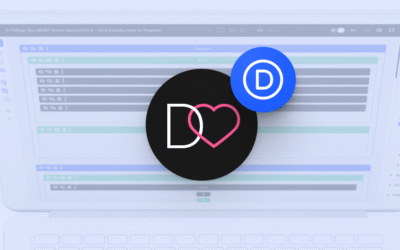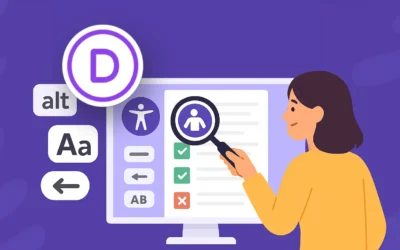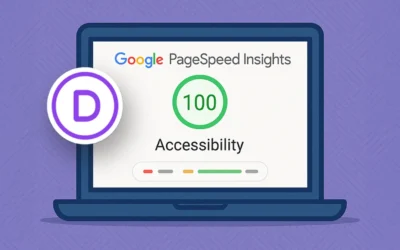Working as a freelance web designer, you get to choose your clients. And sometimes, it might happen that you choose wrong.
You may encounter a client who doesn’t intend to pay you. Or one who doesn’t really know what they want and keeps pestering you for corrections long after the job is done. Or a client who calls at three a.m. to check on your progress… It’s a sign you should break up with your client.
Well, I’ve talked to some freelancers working online to find out their ways of avoiding unpleasantries. As it turns out, most freelancers can recognize certain red flags right from the start to end a working relationship before it turns ugly.
Here are the top red flags you should look out for in potential clients. If you notice one or more of them, it might be time to run away.
Disclaimer: I worked as a freelance copywriter for three years. I know many freelancers working in web design, marketing, and other fields. And I am here to reassure you that 90% of clients (a completely unverified statistic) are awesome! There is nothing to fear, because most freelance clients are fantastic, decent people. This article was written to help you suss out those remaining 10%.
But the truth is, many freelancers develop a sixth sense over time. It allows them to assess a potential client automatically by looking out for certain cues. Until you develop that instinct, though, it’s best to rely on rules.
So, what red flags should you look out for?
Unclear identity
The first, most important step is to ascertain your potential client’s identity. If you’re approached on Facebook by a Johnny S., who’s missing a profile picture and any relevant information in their profile, it’s a red flag. Or if someone writes to you from a gmail address that sounds like it was created in high school, and then fails to introduce themselves, ditto. A client whose identity is unclear and unverifiable is a risky client.
The perfect introduction from a new client would be an email or message stating their full name, the company their work for, if relevant, and their position. They should state the goal they want to achieve through working with you, and it should fit their data. You should also be able to verify their identity easily, for example, by looking them up on LinkedIn.
Lack of trust in your skills
Ever met a client who wanted you to just design one little page to see how it works? You have your portfolio posted online, easy for them to look up. But they still insist that their website will be different and they don’t want to commit until they are certain you can do it.
That’s when you run.
If you have a web design portfolio with a few examples of websites you have built, extra samples should be unnecessary. Especially unpaid samples.
A client who doesn’t trust you will also try to wriggle out from signing a contract, citing the above reason: they don’t know if they will like the website you build.
For that very reason, you should always draw up a clear contract before you start working or hand over your project. Specify your rates and other important agreements upfront and have your client sign. If they refuse, that’s as clear a red flag as you can get. Don’t work for them.
Nagging
Let’s say your client passed all the tests. You signed a contract and got to work. They text you the next morning at dawn to see how it’s going. When you don’t reply immediately (because you became a freelancer to wake up at 11 a.m. and work in your pajamas, two very important reasons), they call. At 6 a.m.
So you tell them it’s going fine, and they should refer to the schedule you have drawn up in the contract (hopefully specifying the deadlines for respective stages of the project). So they hang up. A few hours later, they pop in your email with some additional specifications for the project. When you don’t answer at once, they send another set of specs via text.
And then call you an hour later.
If you see this behavior pattern from the start, you can still retreat. A nagging client will most likely be disrespectful and unprofessional, calling at all hours of night and day and scattering project-related information over many platforms, sending some over email, some over text, and calling about others.
It’s very difficult to keep track of so much data over so many different media. And also, how are you supposed to work when they keep interrupting you with their calls?

Ghosting
Let’s say you talked to a client. The initial agreements look great and they just need to confirm one last thing before they give you the go-ahead to start. They say they’ll call tomorrow.
And they do call. Three weeks later.
This is a red flag. If someone says they will call and then don’t, this means they are unreliable. Of course, if they get back to you with a valid reason for not calling, you might give them a second chance, but generally, if someone ghosts you, it’s a strong indication you won’t be able to depend on them.
Also, if you have questions and they take weeks to reply, this will slow down your work. And on top of that, they might fail to respond when you send an outstanding payment notice, as well.
Unclear communication
This is more of a yellow flag than a red one, but don’t underestimate the impact of bad communication on your work. It can become frustrating.
Picture this: your client filled out the brief you sent them, giving you a good idea of what sort of website they want. You asked some follow up questions, got a green light, and started working.
And when you get back to them with a ready website, they want multiple corrections, saying that they actually wanted something else.
Another issue is when your client is unable to say what they want. If they have trouble answering your questions or offer vague statements, this could seriously impede your progress. When you encounter this sort of behavior, tread with caution.
Unreasonable haggling
Some back-and-forth when discussing the price might happen. But if your client wants you to lower your price by a significant amount (10% or more), this is an indication of a problem.
My freelancer colleagues told me that one very obvious red flag is when a client starts haggling from the get go, before they even familiarize themselves with your portfolio and qualifications.
This is a sign that they aren’t interested in your skills; they just want the lowest price. Or rather, they ARE interested in your skills and require a perfect job. But they don’t believe premium quality is worth paying a premium price.
If the price is a problem from the start, there is good reason to expect it will still be a problem when it comes to paying for your work.
Better avoid unreasonably haggling clients altogether.
Criticizing other freelancers
If a client comes to you with stories of how dissatisfied and disappointed they were with other web designers, you might be tempted to feel pleased. After all, they chose to trust you above the competition, right?
Well, this is actually a trap.
A client who claims to have worked with multiple freelancers who disappointed them is likely to be equally disappointed with your work. Their problem isn’t that the other freelancers sucked. It is that, in this client’s opinion, all freelancers suck. Complaining about your competition is not only unprofessional, it also indicates this client might not respect the work you do.
This red flag will usually be paired with unreasonable haggling (caused by the lack of respect which leads them to think your work isn’t worth much), so you will be able to recognize a client like this at once.
Bragging
If a client tells you how big and important their company is (when you’ve never heard of it) or how famous their business partners are, or even outright says doing a project for them will be your big break… better run away.
Because if you end up working for a truly big company, they will probably have you sign a non-disclosure agreement (NDA), meaning you won’t be able to tell anyone that you worked for them. They will also be likely to accept premium rates, and your communication will be professional, meaning no bragging on their part.
But if a potential client tries to convince you working for them will benefit you in the future, chances are – you guessed it – they will want you to lower your price much below the respectable limit.

Red flag combo: break up with your client right now
The great news is, usually a problematic client will show multiple of these signs, tipping you off from the start. I once had a potential client who called me on the phone, which isn’t necessarily a red flag, although sketchy clients might prefer calling to avoid leaving a digital trail.
In this phone conversation, he hit a combo of client red flags. He started off by insulting my competition and telling me how he couldn’t find a good content writer for his company, because all content writers he had worked with were incompetent. (Seriously? All of them? That was the first red flag.)
He then went on to explain how rapidly growing his company was and how he did business with famous brands. He even told me this would be my big career break, promising that after I took this job, I would start making tons of money.
When I told him my rates for the type of project he wanted, the client started haggling, trying to lower my rate… by 50%, way below the industry standard rate. I quickly said goodbye after that. When you see more than one red flag, it’s a sign to break up with your client.
Extra tip for safe freelancing
Even if a prospective client seems trustworthy and doesn’t tip off any alarm bells, you should still practice the basics of safe freelancing. That means signing a contract before you devote your time and skills to a project, so in case of trouble, you have legal proof. It is also a great practice to divide a project into stages with separate deadlines, making it clear your client should pay an agreed rate after you complete each stage.
And another great tip to ensure you only have excellent clients? Be excellent yourself!
Final thoughts
We hope this guide will be helpful in your freelancing journey! Have you ever met clients who showed one or more of these red flags? Or maybe there are some other red flags that you would add to the list? Let us know in the comments!



I used to give my clients ridiculously cheap hosting to keep them as customers but I found many of them took advantage of the cheap hosting without ever getting any follow on design or development work.
Can’t blame them for being savvy but I don’t do hosting anymore!
What do you use to get clients to sign? Especially good to know if free! Thanks.
Well, I’m in Poland, so what I say might not apply to your particular situation. That said, here is what I did when I had freelance clients: I just searched for a basic contract template in Polish and filled it in with the necessary info. I had the client sign it using an online pdf tool, for example this one: https://www.sejda.com/sign-pdf
I also used a service that issued invoices in my name and offered some protection in that they would require the client to pay before they released the final work. But they take a commission fee for every invoice. Still, I found it quite convenient and just increased my prices to have that commission covered. Here is their English website: https://useme.com/en/
If anyone else could chime in with their solutions, I would be grateful!
I not only work with a contract, but also with a down payment of 50% (100% if I’ll be working on an excisting website to which the client has admin access – I offer pre-paid creditcards for that) before I start working.
In the first instance, I only build the desktop version of the homepage (which also includes the sitewide header and footer most of the time). Only after I have a written approval of it, I optimize it for different devices and continue with other pages.
I build the website on my own development server, which has a dedicated subdomain where the client can see the development (but not access the backend!). Once the site is complete, the client pays the remaining 50% before I move the site to the(ir) live server.
Thank you for this tip!